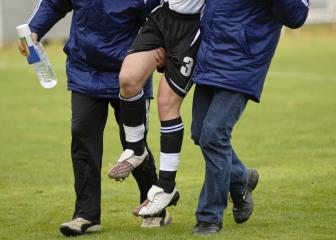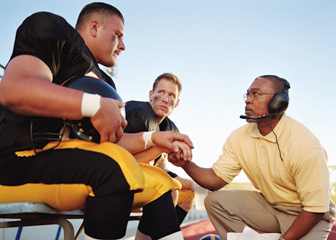Summary
Please enable javascript to play this video.
| Quick Facts: Athletic Trainers | |
|---|---|
| $60,250 per year | |
| Master's degree | |
| None | |
| None | |
| 33,900 | |
| 11% (Much faster than average) | |
| 3,800 | |
What Athletic Trainers Do
Athletic trainers specialize in preventing, diagnosing, and treating muscle and bone injuries and illnesses.
Work Environment
Many athletic trainers work in educational settings, such as colleges, universities, elementary schools, and secondary schools. Others work in hospitals, fitness centers, or physicians’ offices, or for professional sports teams.
How to Become an Athletic Trainer
Athletic trainers typically need at least a bachelor's degree, and master’s degrees are common. Nearly all states require athletic trainers to have a license or certification; requirements vary by state.
Pay
The median annual wage for athletic trainers was $60,250 in May 2024.
Job Outlook
Employment of athletic trainers is projected to grow 11 percent from 2024 to 2034, much faster than the average for all occupations.
About 2,400 openings for athletic trainers are projected each year, on average, over the decade. Many of those openings are expected to result from the need to replace workers who transfer to different occupations or exit the labor force, such as to retire.
State & Area Data
Explore resources for employment and wages by state and area for athletic trainers.
Similar Occupations
Compare the job duties, education, job growth, and pay of athletic trainers with similar occupations.
More Information, Including Links to O*NET
Learn more about athletic trainers by visiting additional resources, including O*NET, a source on key characteristics of workers and occupations.
 United States Department of Labor
United States Department of Labor












